This article shows you how to forcibly close an application that appears to be frozen. The procedures described refer to Mac OS X systems. Read on for more information.
Steps
Method 1 of 4: Using the Apple Menu
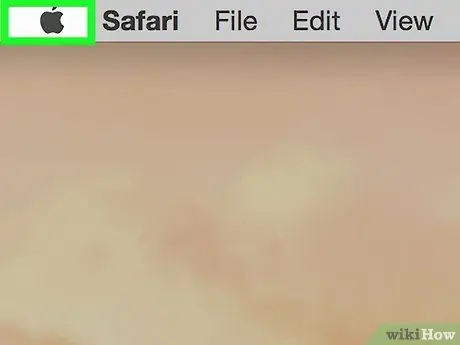
Step 1. Enter the "Apple" menu
It features the Apple logo and is located in the upper left corner of the screen.
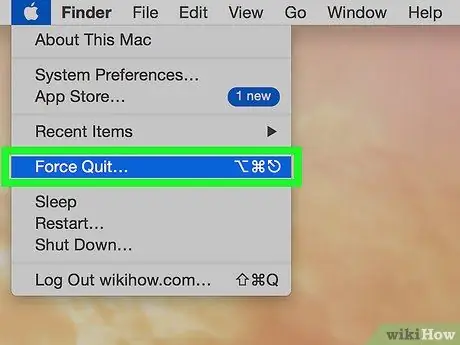
Step 2. Choose the Force Quit… option
It is located in the middle of the drop-down menu that appeared.
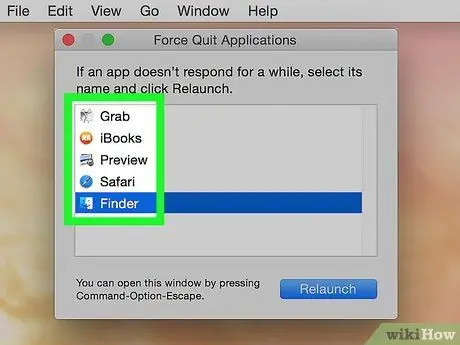
Step 3. Select the application you want to close
All blocked apps that no longer respond to commands are indicated by "(Not Responding)"
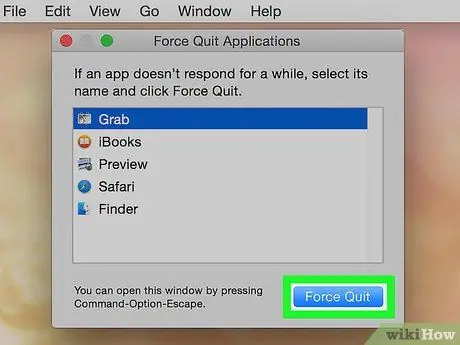
Step 4. Press the Force Quit button
The selected program will be closed and can then be restarted.
If your entire system has crashed, your Mac may need to be restarted
Method 2 of 4: Using Keyboard Shortcuts
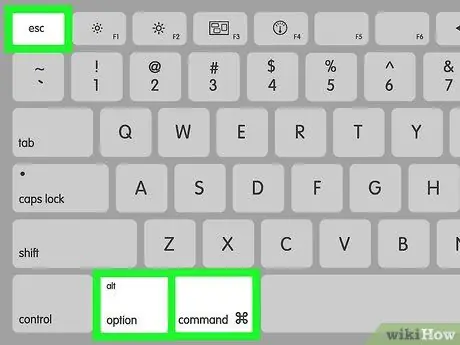
Step 1. Press the key combination ⌘ + ⌥ Option + Esc
The "Force Quit Applications" dialog box will be displayed.

Step 2. Select the application you want to close
All blocked apps that no longer respond to commands are indicated by "(Not Responding)"
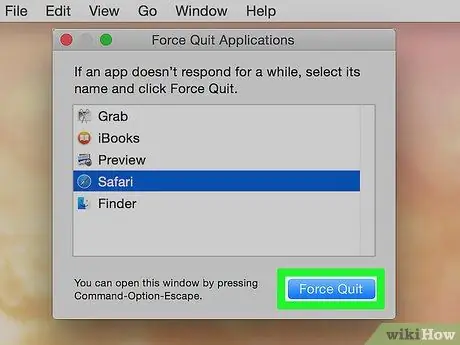
Step 3. Press the Force Quit button
The selected program will be closed and can then be restarted.
Method 3 of 4: Using the Activity Monitor App
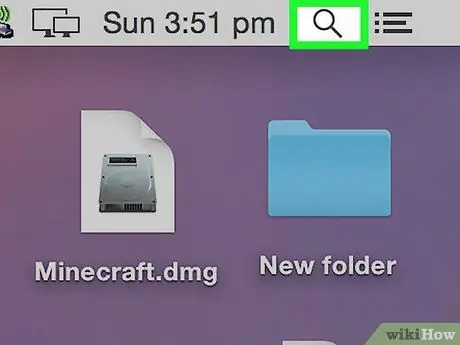
Step 1. Open the Spotlight field
It features a magnifying glass icon located in the upper right corner of the desktop.
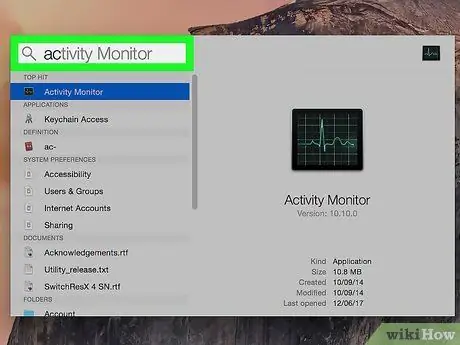
Step 2. Type the keywords "activity monitoring" into the search field that appears
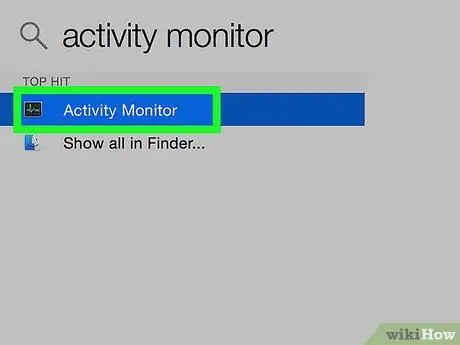
Step 3. Select the Activity Monitor icon located inside the folder "Applications" or "Utility".

Step 4. Select the application you want to close
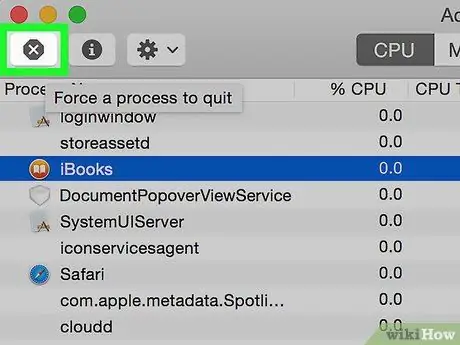
Step 5. Press the "Quit Process" button located in the upper left corner of the window
This will terminate the selected application.
Method 4 of 4: Using the Terminal Window

Step 1. Open a "Terminal" window
By default this application is located inside the "Utilities" folder, which in turn is located in the "Applications" folder.
If the "Force Quit …" functionality of the operating system did not have the desired effect, you will need to use this method to close the program in question
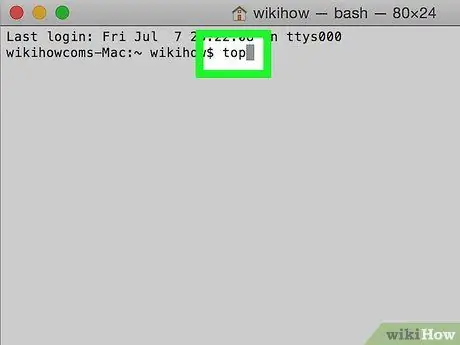
Step 2. Type the command "top" and press the Enter key
The "top" command shows information about the applications currently running.
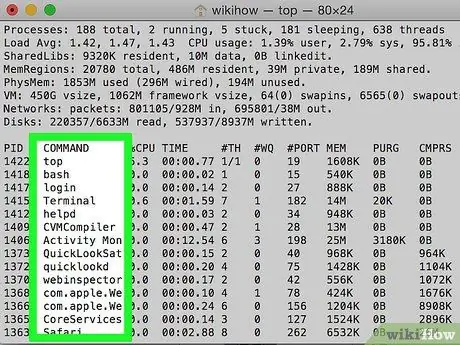
Step 3. Find the program you want to close
The names of the running apps are listed in the "Command" column of the table that appears. Use it to find the name of the program you want to close.
However, remember that the name of the process is displayed in the "Command" column, which may be different from the name of the application it refers to. To locate the process to be terminated, look for a name similar to that of the blocked program
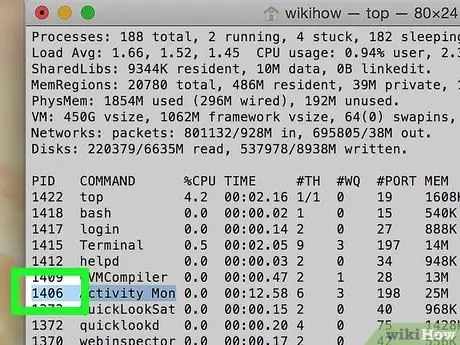
Step 4. Find the PID (acronym for "Process ID") of the process
After identifying the name of the process relating to the program to be closed, it is necessary to go back to the identification number that appears in the "PID" column immediately to the left of the "Command" column. Once identified, make a note of the PID.
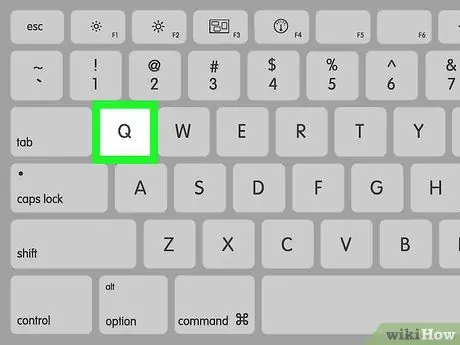
Step 5. Type the command "q"
This will close the list of running apps and the command line of the "Terminal" window will reappear.
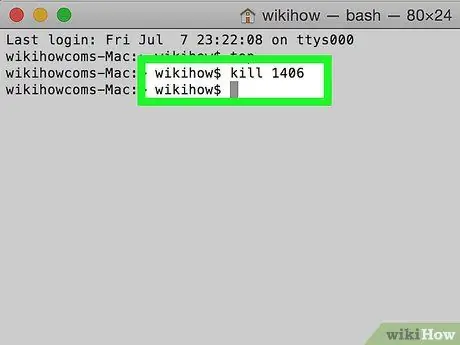
Step 6. Type the command "kill [number]"
Replace the parameter [number] with the PID of the process you wish to terminate. For example, if you need to close the iTunes program and you have discovered that the PID of the related process is 3703, you will have to type the command "kill 3703".
If using the "kill" command does not kill the process, try using the "sudo kill -9 [number]" command, replacing the [number] parameter with the PID of the process you wish to kill
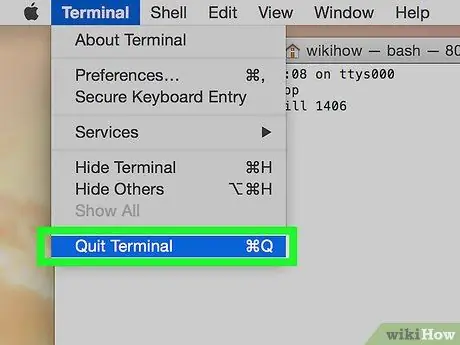
Step 7. Close the "Terminal" window
The frozen application should have closed giving you the option to restart it.
Advice
- It is not possible to force Finder to quit. When you select the Finder program, the "Force Quit" button in the "Force Quit Applications" window changes to "Reopen".
- Before pressing the "Force Quit" button make sure that the selected application is actually still blocked. Sometimes programs are simply struggling with longer than normal processing, so while you open the "Force Quit Applications" window they may have resumed normal operation.






